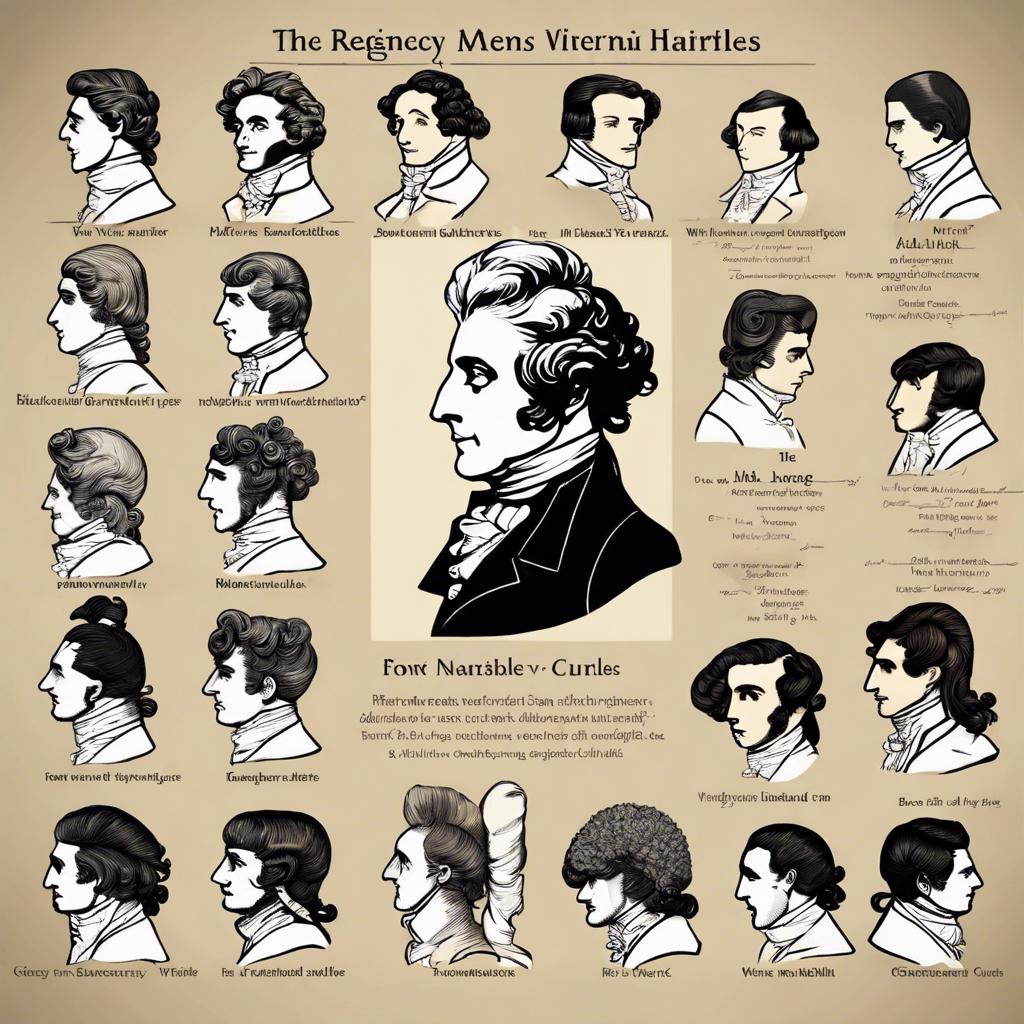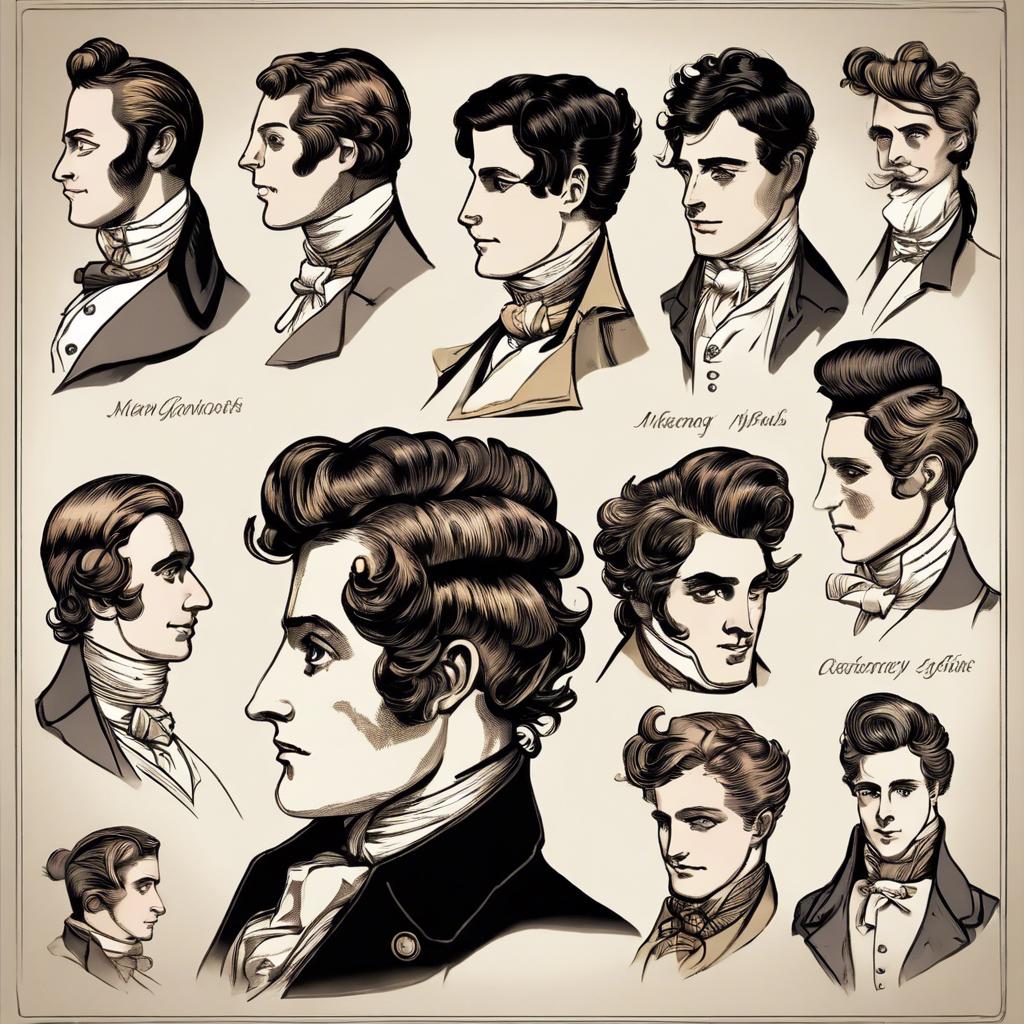In the world of men’s fashion throughout history, hairstyles have played a significant role in reflecting societal norms and trends. One such period that saw a distinctive change in men’s hair grooming was the Regency era. Characterized by its elegant and refined style, Regency hairstyles for men were a symbol of sophistication and class. Join us as we delve into the intricate world of men’s Regency hairstyles, exploring the history, techniques, and influences that shaped this iconic era of grooming.
Step Into the World of Cheryl Bolen
Dive into the enchanting stories of love, intrigue, and elegance set in the Regency Era. Cheryl Bolen's novels offer timeless romance and captivating tales that will leave you wanting more.
Explore Cheryl Bolen's Books Now
– Evolution of Mens Regency Hairstyles: From Powdered Wigs to Natural Curls
In the early 19th century, men’s regency hairstyles underwent a significant evolution, transitioning from elaborate powdered wigs to more natural and relaxed curls. This shift in fashion reflected the changing societal norms and a desire for simplicity and elegance. Men began to adopt softer and more effortless hairstyles that complemented their facial features and personal style.
During the regency era, men started to veer away from the opulence of large and cumbersome wigs that were popular in the previous centuries. Instead, they opted for shorter and more manageable haircuts that required less maintenance. Natural curls became a popular choice among gentlemen, adding a touch of sophistication and refinement to their overall look. These hairstyles were often styled with a side part or swept back to create a clean and polished appearance.
The regency period also saw the revival of classic hairstyles such as the quiff and the pompadour, which added height and volume to the hair. Men began to experiment with different hair products such as pomades and oils to achieve the desired level of shine and hold. the evolution of men’s regency hairstyles marked a shift towards a more understated yet elegant aesthetic that has stood the test of time.
– Achieving the Perfect Regency Look: Tips for Styling Mens Hair
When it comes to achieving the perfect Regency look, styling men’s hair is a crucial element to consider. To truly embody the elegance and sophistication of the Regency era, paying attention to the details of your hairstyle is essential. Here are some tips to help you achieve the perfect Regency hairstyle:
1. Keep it Neat: Regency hairstyles for men were known for their neat and polished appearance. Opt for sleek, well-groomed hair that is styled to perfection. Consider a classic side part or a slicked-back look for an authentic Regency style.
2. Embrace the Curls: Curls were a popular choice for men’s hairstyles during the Regency era. If you have natural curls, embrace them and style them to enhance your overall look. Consider using a curling iron to add definition and volume to your hair.
– Iconic Regency Hairstyles for Men: Inspiration from Historical Figures and Popular Culture
The Regency era was a time of elegance and refinement in men’s fashion, and hairstyles were no exception. Drawing inspiration from historical figures and popular culture of the time, Regency men adorned themselves with distinctive hairdos that reflected their status and sophistication. From the timeless simplicity of the “Hove Crop” to the daring flair of the “Brummell Quiff,” these iconic Regency hairstyles continue to captivate modern-day gentlemen seeking to embrace the timeless charm of the past.
1. The Hove Crop
The Hove Crop was a classic Regency hairstyle characterized by short, neatly trimmed hair on the sides and back, with a slightly longer length on top. This sleek and polished look was popularized by figures such as George IV and William Pitt the Younger, exuding an air of refinement and sophistication. To achieve the Hove Crop, gentlemen would visit their barber for regular trims and styling to maintain the clean and polished appearance.
2. The Byron Sweep
Inspired by the romantic poet Lord Byron, the Byron Sweep was a popular Regency hairstyle that featured longer, tousled locks swept back from the forehead. This disheveled yet dashing look was embraced by men who wanted to embody the rebellious spirit of Byron and his literary contemporaries. To achieve the Byron Sweep, gentlemen would grow out their hair and use pomade or oils to create a natural and effortless style that captured the essence of the Romantic era.
3. The Beau Brummell Bun
Named after the iconic dandy Beau Brummell, the Beau Brummell Bun was a bold and statement-making Regency hairstyle that featured a high bun or topknot on the crown of the head. This avant-garde look was favored by trendsetters and fashion-forward individuals who wanted to stand out in a crowd. To achieve the Beau Brummell Bun, gentlemen would gather their hair into a tight bun secured with pins or ribbons, creating a striking silhouette that epitomized the elegance and extravagance of the Regency era.
Closing Remarks
men’s Regency hairstyles were a reflection of the elegant and refined aesthetic of the early 19th century. From the popular “Brutus” style to the elaborate curls and fringe, these hairstyles were carefully crafted to express wealth, status, and sophistication. While these hairstyles may no longer be in vogue, they serve as a reminder of the timeless influence of history on fashion. As we look back on the Regency era, we can appreciate the artistry and attention to detail that went into creating these distinctive looks. Whether you are inspired to emulate these styles or simply admire them from afar, one thing is for certain – the allure of men’s Regency hairstyles will always hold a special place in the annals of fashion history.


